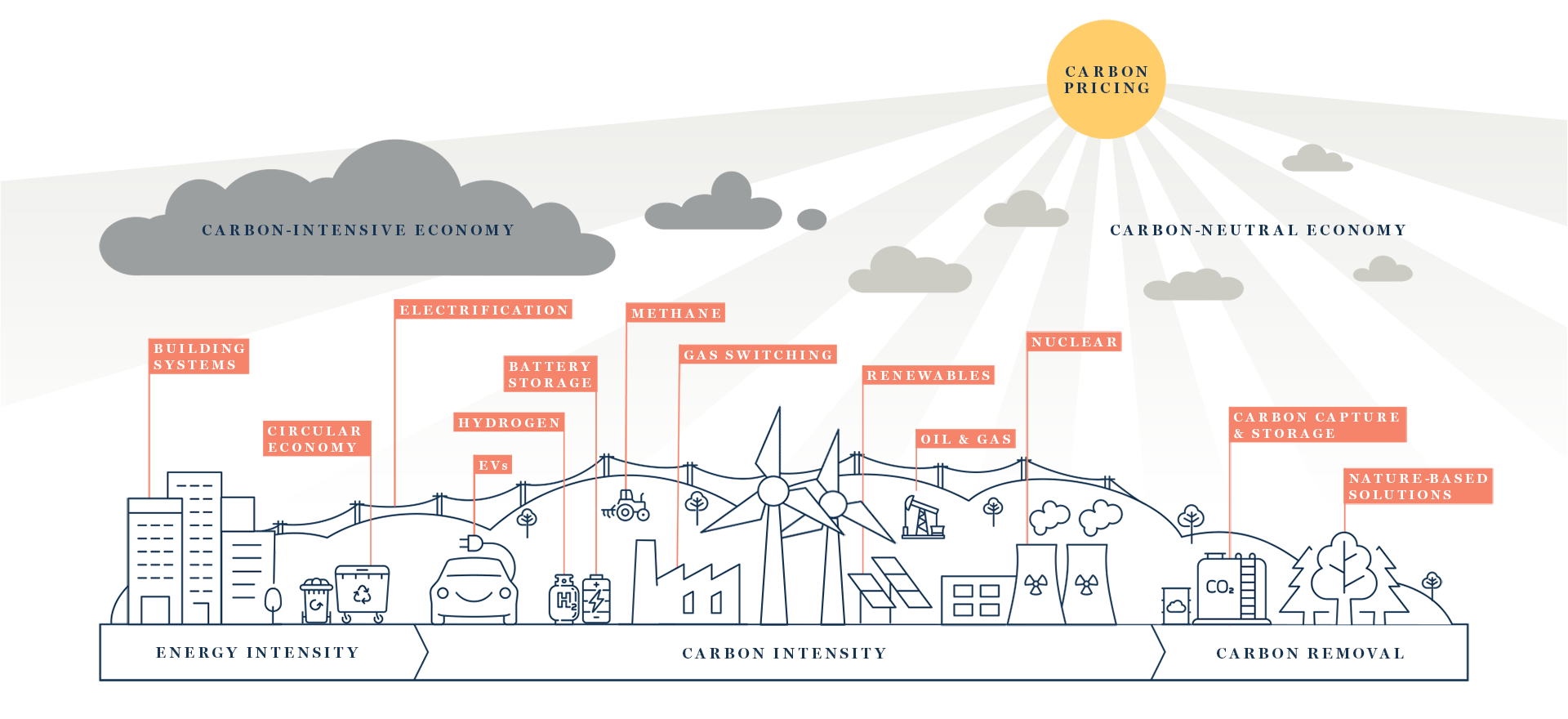The Journey to a Carbon-Neutral Economy
Today, carbon emissions must be a serious consideration for all investors, particularly those with a long-term perspective. The drive towards decarbonisation is a trend that is reshaping not just the energy industry, but the global economy as a whole. Over the last 18 months, we have been building on our collective knowledge and, in particular, the strategies and technologies that will shape the transition to a lower carbon economy over the coming decades across a wide range of related topics.
The global energy system is too complex to adopt a one-size-fits-all solution to emissions reduction. Whilst a lower carbon world may present some challenges, high-quality companies with the requisite innovation have the opportunity to thrive. Here, we identify how we seek to put this recent work into practice and how it will enhance our analysis going forward.
KEY HIGHLIGHTS
Oil and Gas
Fossil fuels have long been the crucial component of the global energy mix. As the world transitions towards a lower-carbon future, is there still a case for long-term investment in oil and gas companies today?

Electrification
In attempting to decarbonise the world’s energy systems, there is no one-size-fits-all solution. Here, we discuss the role that electrification can play via power generation, electric vehicles, hydrogen and building systems.















